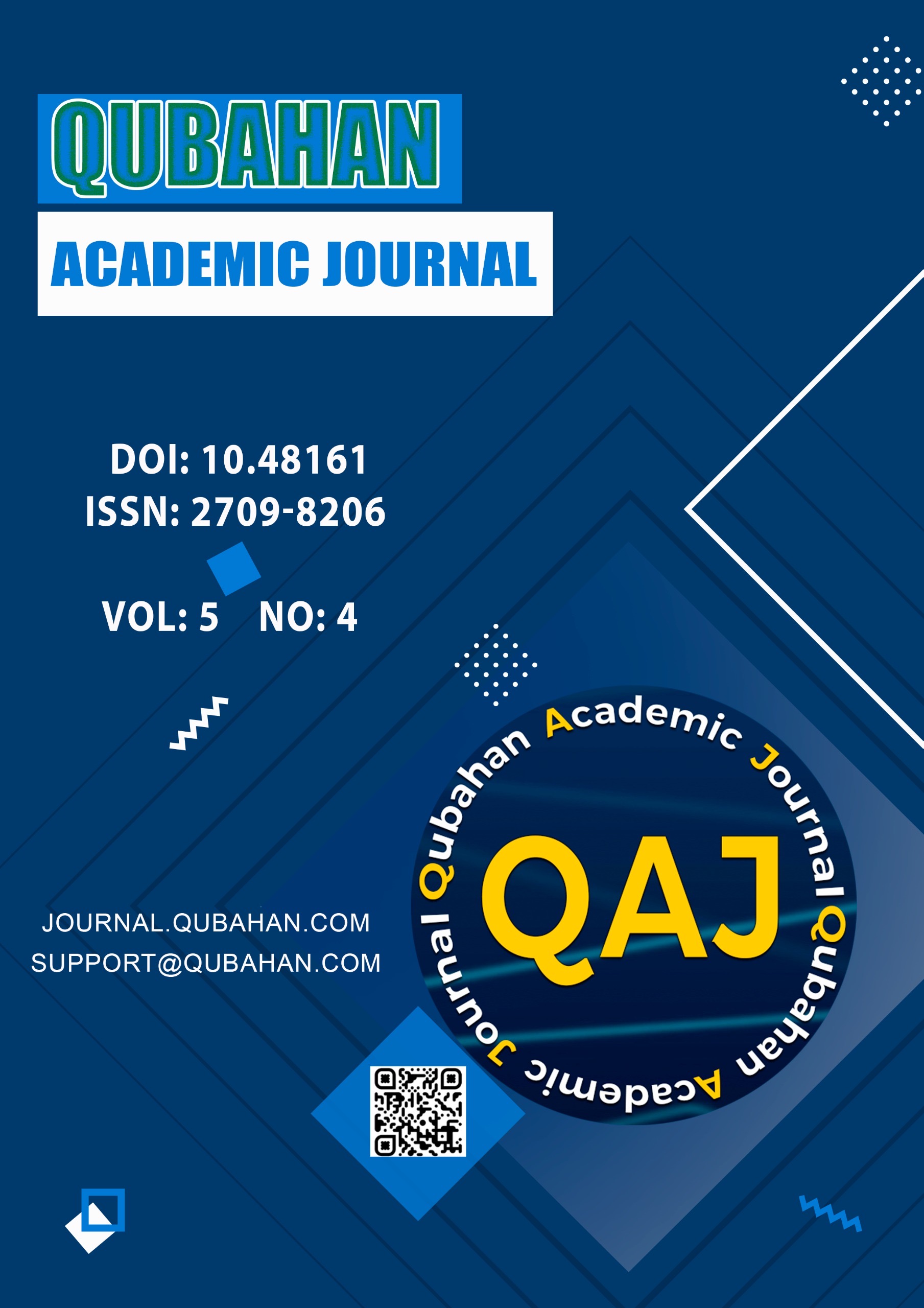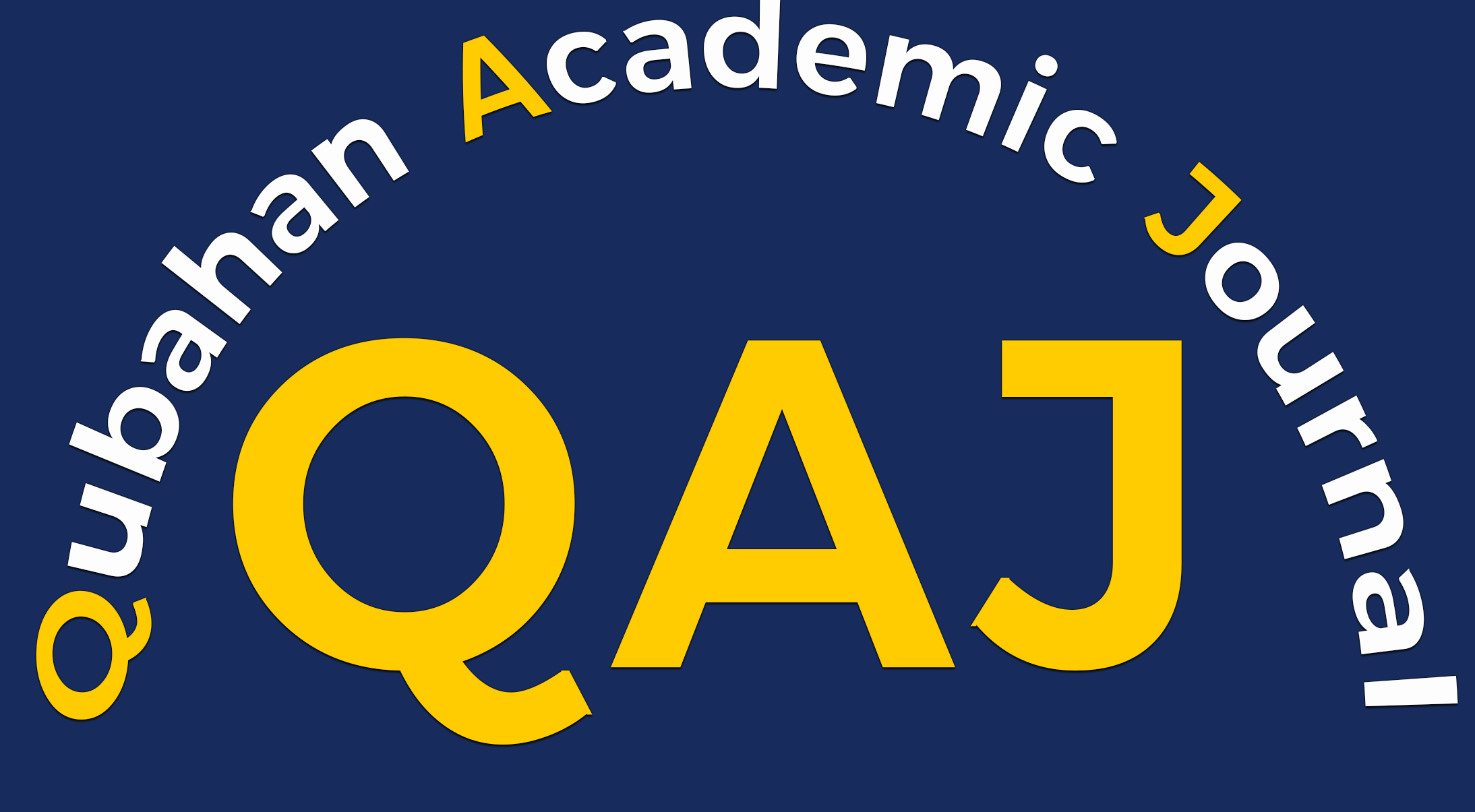Educational Model of Stunting Prevention Increases Awareness as a Result of the Development of the Integrated Eight Actions: SEM Analysis
DOI:
https://doi.org/10.48161/qaj.v5n4a2100Keywords:
educational; stunting; prevention; awareness; integrated eight actions, SEM-PLS.Abstract
This study examines how Educational Model of Stunting Prevention Increases Awareness as a Result of the Development of the Integrated Eight Actions. The aim is to identify Integrated Eight Action Development Model in Stunting Prevention by Raising Awareness. Methodologically, this paper adopted an observational study approach, referring to the Eight Integrated Actions Model, which was used to assess the awareness of patient families and communities in stunting prevention. Data were collected using a Likert-scale assessment instrument and reviewed to determine its usefulness in standardizing documentation of the Eight Integrated Actions elements. Analysis with SEM-PLS (Structural Equation Modeling-Partial Least Squares) The findings confirmed that all Integrated Eight Actions Model-based Prevention dimensions such as Situation Analysis (β = 0.572; p = 0.042 vs. p<0.05), Activity plan (β = 0.659; p = 0.041 vs. p<0.05 ), Stunting discussion forum (β = 0.729; p = 0.031 vs. p<0.05), Regent/Mayor regulation on the role of village (β = 0.570; p = 0.012 vs. p<0.05), Coaching (β = 0.769; p = 0.044 vs. p<0.05), Data management system (β = 0.669; p = 0.023 vs. p<0.05), Stunting measurement and Publication (β = 0.689; p = 0.017 vs. p<0.05), to Performance review (β = 0.709; p = 0.016 vs. p<0.05) statistically contributed positively to the outcome. The study concludes convincingly proves that the Integrated Eight Actions Model-based Prevention produces a significant correlation in increasing patient and community awareness, simultaneously.
Downloads
References
Syamsuadi, A., Febriani, A., Ermayani, E., Bunyamin, B., & Nursyiamah, N. (2023). The role of cross-sectors in convergence to accelerate stunting reduction in Rokan Hulu Regency. JDP (Journal of Government Affairs and Administration), 6(1), 1–30.
Sutinbuk, D., Nugraheni, S. A., Rahfiludin, M. Z., & Setyaningsih, Y. (2024). Effectiveness of ERKADUTA model to increase stunting prevention behaviors among mothers with toddlers in Indonesia: A quasi-experiment. Narra, 4, e688.
Habir, L. A., Kadir, S., & Boekoesoe, L. (2023). Risk factors for stunting in the first 1000 days of life. International Journal of Medical Science and Clinical Research Studies, 3(9).
Al Ghiffari, N. A., & Hardjati, S. (2025). Implementation of convergence of stunting prevention and reduction through Banyuwangi Tanggap Stunting in Cluring District, Banyuwangi Regency. Reslaj: Religion Education Social Laa Roiba Journal, 7(1).
Hakim, R. (2024). Effectiveness of regional government policy in achieving performance assessment of stunting convergence action in order to reduce stunting rates in 2023 in Lampung Province. Jurnal Sosial dan Humaniora Sains, 9(1), 1–13.
Vaivada, T., Akseer, N., Akseer, S., Somaskandan, A., Stefopulos, M., & Bhutta, Z. A. (2020). Stunting in childhood: An overview of global burden, trends, determinants, and drivers of decline. The American Journal of Clinical Nutrition, 112, 777S–791S.
Hutagalung, A. E. (2021). The role of regencies/cities in implementing 8 convergence actions.
Izzuddin, P. R., & Widiyarta, A. (2024). Village government strategy in efforts to accelerate stunting reduction in Sruni Village, Gedangan District, Sidoarjo Regency. NeoRespublica: Jurnal Ilmu Pemerintahan, 5(2), 971–986.
Dewi, N. N. A. I., Nursini, N. W., & Lestari, P. I. (2024). Improving parenting knowledge to prevent stunting in parents of elementary school students in Sanur, Bali. Jurnal Cahaya Mandalika, 5(2), 807–813.
Marni, M., Zulkifli, A., Thaha, R. M., Hidayanty, H., Stang, S., Syafar, M., & Picauly, I. (2023). Awareness, motivation, and intentions in preventing stunting in the dry land area of Kupang Regency, East Nusa Tenggara Province. International Journal of Sustainable Development and Planning, 18(1).
Soviyati, E., Sulaeman, E. S., Sugihardjo, I., & Wiboworini, B. (2023). Effect of applying the health promotion model in stunting prevention and behavior control in Indonesia. Journal of Education and Health Promotion, 12(1).
Nurhaeni, N., Huda, M. H., Chodidjah, S., Agustini, N., Tri Waluyanti, F., Nadi, H. I., & Jackson, D. (2024). Exploring the strategies and components of interventions to build adolescent awareness about stunting prevention in West Java: A qualitative study. PLOS ONE, 19(12), e0314651.
Al Humaerah, M., Rahayu, M., & Zainuddin, Z. (2024). Analysis of stunting prevention through communication, information and education with empowerment. Jurnal Ilmiah Kesehatan Sandi Husada, 13(2), 396–402.
Fristiwi, P., Nugraheni, S. A., & Kartini, A. (2023). The effectiveness of stunting prevention programs in Indonesia: A systematic review. Jurnal Penelitian Pendidikan IPA, 9(12), 1262–1273.
Herawati, D. M. D., & Sunjaya, D. K. (2022). Implementation outcomes of national convergence action policy to accelerate stunting prevention and reduction at the local level in Indonesia: A qualitative study. International Journal of Environmental Research and Public Health, 19(20), 13591.
Syahrinullah, S. (2024). Strengthening strategy village performance management in effort reducing stunting through multistakeholder involvement in the village. Jurnal Ekonomi, 13(4), 380–388.
Pertiwi, M. S., & Laksmono, B. S. (2024). Child stunting prevention: Policy convergence and actions in Bogor Municipal City Government, Indonesia. Asian Journal of Management, Entrepreneurship and Social Science, 4(4), 1205–1219.
Anasiru, M. A., Domili, I., Hiola, T. T., Hadi, N. S., Nuryani, N., & Mohamad, S. (2024). Analysis of convergence actions in efforts to prevent and manage stunting in Gorontalo City. Jurnal Ilmu Kesehatan, 6(3), 557–574.
Satyadewi, R., Kurnia, G. M., Ersanti, A. M., & Prasasti, C. I. (2024). Evaluation of the nutrition heart program through the four elements of community empowerment approach. Amerta Nutrition.
Simangunsong, F., Hutasoit, I., & Jafa, B. J. (2025). Dynamic governance in reducing stunting in Manggarai Regency, East Nusa Tenggara Province, Indonesia. Open Access Library Journal, 12(3), 1–16.
Hidayati, E., Rahmayanti, D. A., Mubin, M. F., Rahayu, D. A., & Maryam, M. (2021). Self-concept of adolescents who have stunting. In 1st ed. (pp. 23–28).
Supriyanto, A., & Jannah, L. M. (2022). Policy integration analysis of convergence efforts for the acceleration program to reduce stunting in Lebak Regency. Sosio Konsepsia: Jurnal Penelitian dan Pengembangan Kesejahteraan Sosial, 11(2).
Natasha, A. P., & Santoso, R. S. (2024). Collaborative governance process in handling stunting in Bandarharjo Village, Semarang City. Journal of Public Policy Management Review, 1(1), 403–425.
Sujatmiko, E. (2025). Urgency of evaluation of stunting handling programs and activities. Jurnal Keperawatan Profesional, 6(1), 51–56.
Rachmah, Q., Rachmayanti, R. D., Rochmah, T. N., Devy, S. R., Andari, S., Ismayani, H., W. D., F. R. D. P., & Ulya, R. (2023). The efficacy of interpersonal communication training for health workers in behavior change related to stunting. Media Gizi Kesmas, 12(1), 410–416.
Arifin, M. N., Herachwati, N., & Andriyanto, A. (2023). A visionary leader in the implementation of 8 convergence actions to reduce stunting in Trenggalek Regency during the Covid-19 pandemic. Media Bina Ilmiah, 17(10), 2331–2338.
Susilo, B. (2024). Convergence policy on stunting prevention in fulfilling children's rights from an Islamic family law perspective [Doctoral dissertation, Institut Agama Islam Negeri Metro].
Widyawati, M. N., Sumarni, S., Wijayanti, K., Sutomo, B., Windiarti, S. E., & Wibowo, M. A. (2024). Policy to accelerate stunting reduction. Jurnal Kebijakan Kesehatan Indonesia, 13(3), 159–169.
Putri, M. F., & Robani, N. N. (2023). Movements of Posyandu with stunting awareness theme. Journal of Community Service (Pengabdian kepada Masyarakat), 1(2), 315–324.
Lee, L. Q., & Teoh, A. P. (2024). ECO-Campus: A conceptual model unravelling determinants and perceived outcome of environmental management systems adoption in the Malaysian higher education industry. Global Business and Management Research, 16(3), 145–169.
Fournet, N., Voiry, N., Rozenberg, J., Bassi, C., Cassonnet, C., Karch, A., & Tarantola, A. (2023). A cluster of autochthonous dengue transmission in the Paris region: Detection, epidemiology and control measures. Eurosurveillance, 28(49), 2300641.
Harahap, H., Syam, A., Palutturi, S., Syafar, M., Hadi, A. J., Ahmad, H., et al. (2024). Stunting and family socio-cultural determinant factors: A systematic review. Pharmacognosy Journal, 16(1), 268–275.
Ponum, M., Khan, S., Hasan, O., Mahmood, M. T., Abbas, A., Iftikhar, M., et al. (2020). Stunting diagnostic and awareness: Impact assessment study of sociodemographic factors of stunting among school-going children of Pakistan. BMC Pediatrics, 20(1), 232.
Rachmawati, P. D., Triharini, M., & Suciningtyas, P. D. (2021). The contribution of family functions, knowledge and attitudes in children under five with stunting. Enfermería Clínica, 31(S2), S296–S300.
Fuadi, D. S., Hufad, A., Ismawati, D., Jaya, A., Pratama, A., Haryanto, H., et al. (2024). Building public awareness: Education and campaigns to prevent stunting in the next generation. Eurasia Proceedings of Health, Environment and Life Sciences, 13, 88–97.
Prasetyo, A., Noviana, N., Rosdiana, W., Anwar, M. A., Hartiningsih, Hendrixon, et al. (2023). Stunting convergence management framework through system integration based on regional service governance. Sustainability, 15.
Astuti, S. J. W., Dwiningwarni, S. S., & Atmojo, S. (2025). Modeling environmental interactions and collaborative interventions for childhood stunting: A case from Indonesia. Dialogues in Health, 6, 100206.
Yusriadi, Y., Sugiharti, S., Ginting, Y., Sandra, G., & Zarina, A. (2024). Preventing stunting in rural Indonesia: A community-based perspective. African Journal of Food, Agriculture, Nutrition and Development, 24(9), 24470–24491.
Suharto, A., Wildan, M., & Handayani, T. E. (2020). Development of stunting prevention behavior model based on health promotion model and social capital in the Magetan District. Health Notions, 4(2), 48–56.
Bhutta, Z. A., Akseer, N., Keats, E. C., Vaivada, T., Baker, S., Horton, S. E., et al. (2020). How countries can reduce child stunting at scale: Lessons from exemplar countries. The American Journal of Clinical Nutrition, 112, 894S–904S.
Downloads
Published
How to Cite
Issue
Section
License
Copyright (c) 2025 Qubahan Academic Journal

This work is licensed under a Creative Commons Attribution-NonCommercial-NoDerivatives 4.0 International License.











